Found a total of 10000 related content

CSS Flexbox vs Grid: a comprehensive review
Article Introduction:Choosing Flexbox or Grid depends on the layout requirements: 1) Flexbox is suitable for one-dimensional layouts, such as navigation bar; 2) Grid is suitable for two-dimensional layouts, such as magazine layouts. The two can be used in the project to improve the layout effect.
2025-05-12
comment 0
443
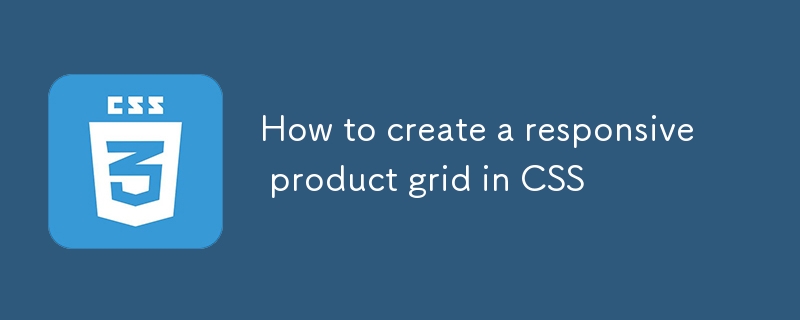
How to create a responsive product grid in CSS
Article Introduction:Use CSSGrid to create a responsive product grid, and implement adaptive layout through display:grid and grid-template-columns:repeat(auto-fit,minmax(250px,1fr)); 2. Set the gap attribute to ensure consistent project spacing; 3. Add styles to each product to form a card effect, including borders, rounded corners, margins and shadows; 4. Optionally use media queries to further control the number of columns under a specific screen size; 5. The complete example includes HTML structure, CSS layout and responsive design to ensure that it can be displayed well on different devices, and ultimately implement a screen change without JavaScript and CSS only
2025-08-15
comment 0
580
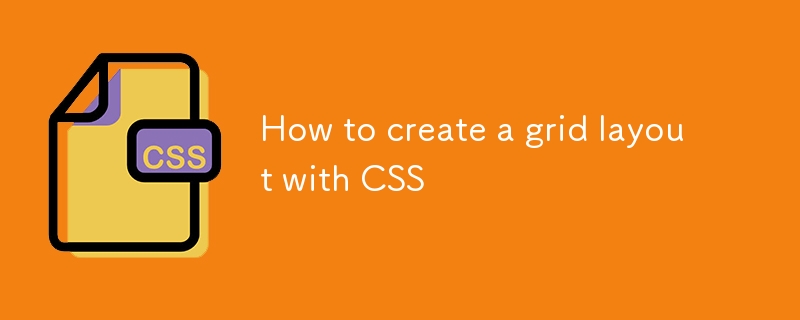
How to create a grid layout with CSS
Article Introduction:To create a CSS grid layout, you need to set the display:grid of the container first, then define the row and column size and place the project; use fr, repeat() and grid-template-areas to flexibly layout, and implement responsive design through media queries, and finally build a complex and adaptive two-dimensional layout with concise code.
2025-08-13
comment 0
935
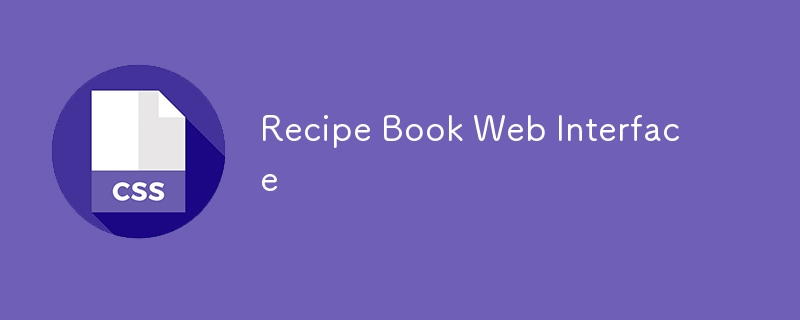
Recipe Book Web Interface
Article Introduction:In this project, you'll build a Recipe Book Web Interface using HTML and CSS. This project introduces learners to advanced layout concepts like CSS Grid, Flexbox, and hover effects, while also covering the use of images and responsive design.
2024-12-27
comment 0
404

How to create a filterable gallery in Bootstrap
Article Introduction:Create a filterable gallery requires setting up HTML structure, adding JavaScript filtering logic, optionally enhancing animation effects, and ensuring responsive design. 1. Use buttons with data-filter attributes and gallery projects with data-category attributes to build HTML; 2. Listen to button click events through JavaScript, switch button status, and control project display or hiding according to data-filter value; 3. Smooth animation can be achieved through CSS transition or jQuery's fadeIn/fadeOut; 4. Use the Bootstrap grid system to automatically realize responsive layout, and finally realize a plug-in-free and Bootstrap-based sound.
2025-08-22
comment 0
1035
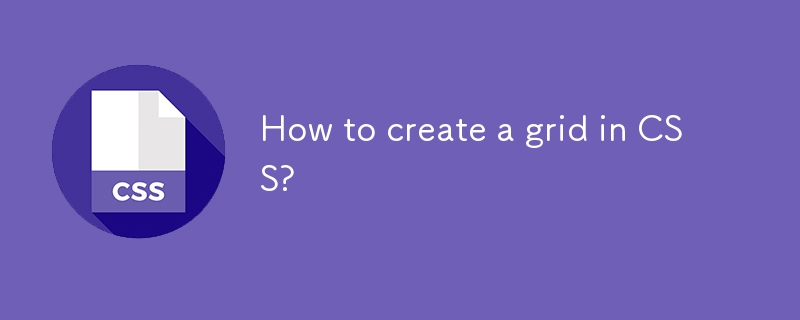
How to create a grid in CSS?
Article Introduction:To define a grid container, you need to set display:grid; 2. Use grid-template-columns and grid-template-rows to set the row and column size; 3. Use fr, auto, % and other flexible units to achieve responsive layout; 4. Use repeat() function to simplify repeated column or row definitions; 5. Use minmax() and auto-fit/auto-fill to achieve adaptive grids; 6. Optionally, precisely control project location through grid-column, grid-row or grid-area; complete settings include container declaration, track definition, gap addition and responsive optimization, so that efficient and flexible two-dimensional layout can be built.
2025-07-28
comment 0
188
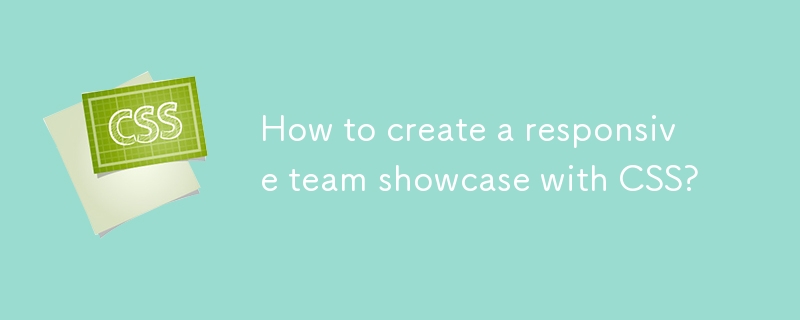
How to create a responsive team showcase with CSS?
Article Introduction:Use semantic HTML structure team member information, and each member uses a class as a div to wrap it with a class; 2. Use CSSGrid layout to realize a responsive grid through grid-template-columns:repeat(auto-fit,minmax(280px,1fr)) to ensure that the number of columns is automatically adjusted on different devices; 3. Follow the principle of mobile priority and optimize the display effect of small screens in conjunction with media queries; 4. Improve accessibility, including image alt text, correct title level and keyboard navigation focus style; 5. Add fade-in animation to enhance the visual experience, and achieve the fade-in effect of member cards one by one through animation. Final reality
2025-08-05
comment 0
542

Create grid in HTML using CSS Grid layout
Article Introduction:This article will guide you how to create grid structures in HTML pages using CSS Grid layout. We will start with the HTML structure and then go into detail about how to place page elements into the grid using CSS, ultimately achieving a flexible and responsive layout. Through this article, you will master the basic concepts and usage of CSS Grid and be able to apply it to your web project.
2025-08-30
comment 0
997
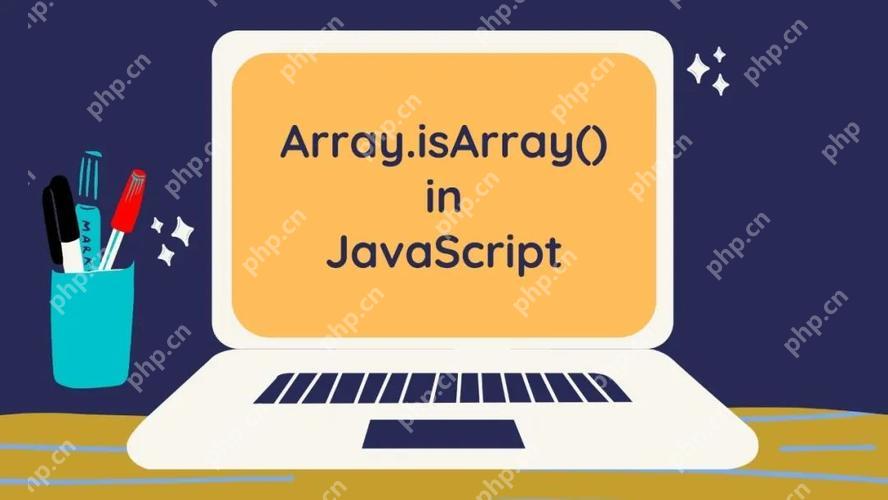
How to implement complex grid layouts using CSS Grid?
Article Introduction:The methods to implement complex grid layout using CSSGrid include: 1. Define the basic grid structure and use display:grid and grid-template-columns/rows. 2. Use grid-template-areas and grid-area to allocate elements to the specified area. 3. Use media queries to realize responsive design. 4. Control grid project alignment and spacing through justify-items, align-items and other properties.
2025-05-20
comment 0
437
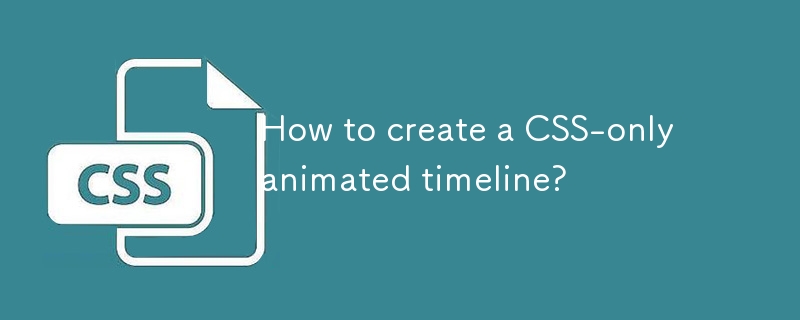
How to create a CSS-only animated timeline?
Article Introduction:To create a CSS-only animation timeline, you need to first build a semantic HTML structure, and each event is represented by a div containing dots and content; 2. Use Flexbox layout and pseudo-elements to create a centered vertical line, and use @keyframes to define fadeInUp animation to achieve a cascaded entry effect from bottom to top; 3. Use animation-delay item by item to achieve cascaded entry effect, and optionally add alternating content alignment on left and right; 4. Optional enhancements include using drawLine animation to simulate the line drawing process, hover effect and responsive adaptation; 5. Key points include using opacity and transform to ensure animation performance, adopt semantic tags and test mobile layout. In the end, nothing is achieved
2025-08-04
comment 0
419

Implementing advanced layouts with CSS Grid techniques
Article Introduction:To use CSSGrid to implement advanced layouts, the key is to master its structural control and positioning methods. First, use grid-template-areas to build a semantic layout, such as the "head sidebar content area bottom" structure; second, through grid-column and grid-row, the element position can be accurately controlled, so that the card can span multiple columns or rows; then, combine minmax() and auto-fit to create a responsive grid, and automatically adjust the number of columns; finally, use cascade layout and z-index to control the element level to achieve a floating effect. These techniques can address complex and responsive web design needs.
2025-07-14
comment 0
686
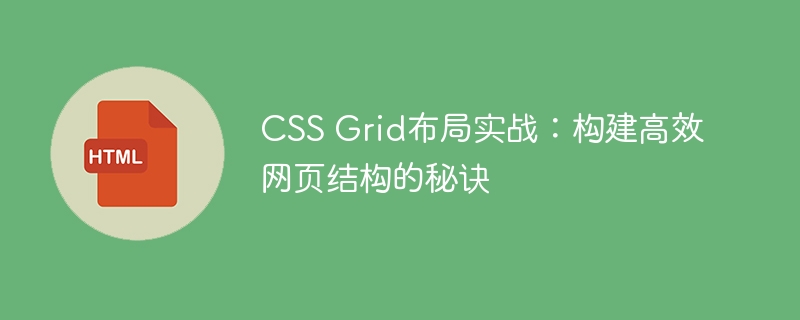
CSS Grid layout practice: The secret to building an efficient web structure
Article Introduction:This tutorial explores in-depth how to use HTML and CSS Grid layouts to build efficient and responsive web structures. We will focus on the core properties of CSS Grid, such as display: grid and grid-template-areas, and demonstrate how to define grid areas through actual examples. At the same time, the importance of correct HTML tag closure for normal rendering of CSS Grid is emphasized, helping beginners avoid common mistakes and achieve the expected page layout effect.
2025-08-30
comment 0
737
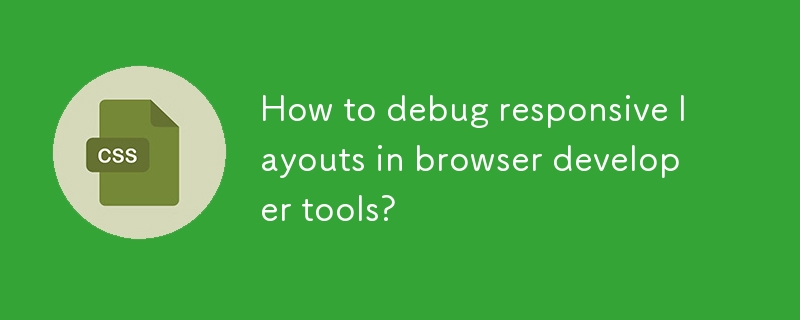
How to debug responsive layouts in browser developer tools?
Article Introduction:The key to debugging responsive layouts is to utilize the browser developer tools' device emulator, media query checking, layout panels, and real-time editing capabilities. Use the device simulator to view page performance at different resolutions to ensure the correct layout; use the "Computed" panel to check whether the media query rules are effective and prioritized; Chrome's "Layout" panel can visualize the layout details of Grid and Flexbox; finally use the real-time editing function to test style modification and confirm the repair effect. Proficiency in these techniques can help quickly locate and solve problems in responsive design.
2025-07-02
comment 0
716
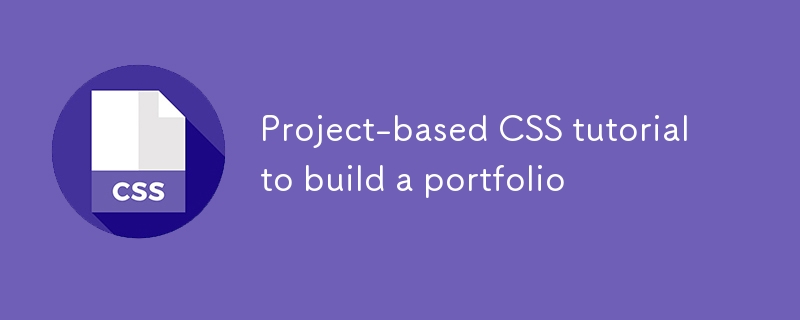
Project-based CSS tutorial to build a portfolio
Article Introduction:To build a portfolio website using HTML and CSS, first plan a clear layout structure, then use mobile-first CSS for style design, then highlight project display, and finally add details to improve the overall experience. The specific steps include: 1. Use semantic HTML tags to build a basic structure containing headers, related, projects and contact parts; 2. Realize responsive design through flexbox or grid layout, media query and interactive effects; 3. Display projects in the form of cards and add animation effects; 4. Select color schemes, readable fonts, optimize links and SEO, and test website performance on different devices.
2025-07-01
comment 0
579
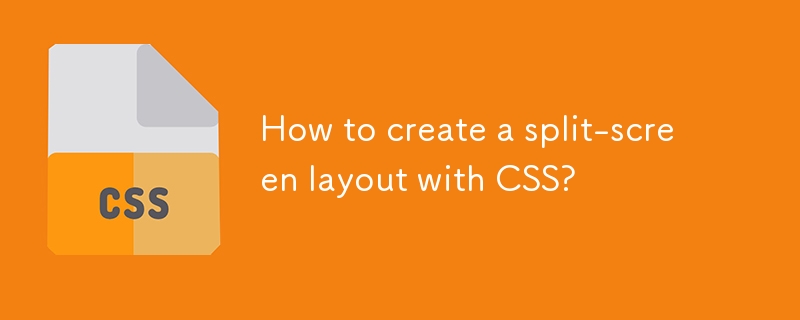
How to create a split-screen layout with CSS?
Article Introduction:Using Flexbox, you can achieve equal-wide split-screen layout by setting container display:flex and child element flex:1; 2. Using CSSGrid can define two columns through grid-template-columns:1fr1fr to achieve the same effect; both of them fill the viewport with height:100vh, and a mobile stacked responsive layout can be achieved through media query, ultimately achieving a simple and flexible split-screen design.
2025-08-05
comment 0
307
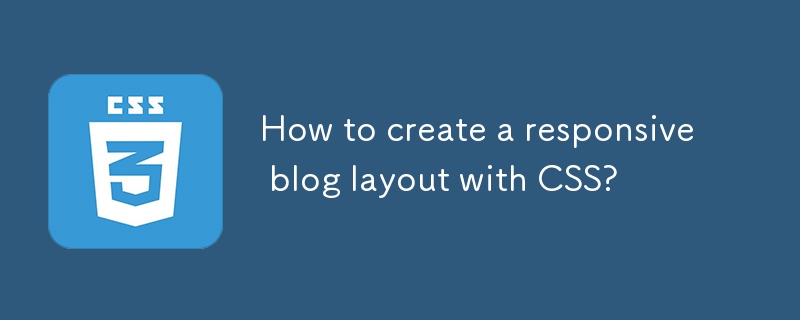
How to create a responsive blog layout with CSS?
Article Introduction:To create a responsive blog layout, the following steps must be followed: 1. Adopt a mobile-first design method, first write basic styles for the small screen, and then adapt to the large screen through media query; 2. Use CSSGrid or Flexbox to build a flexible page structure, such as using Grid to implement responsive grid layout of the main content and sidebar; 3. Add breakpoints to optimize the display effect of different devices, use two column layouts above 768px, and further improve the layout and font size above 1024px; 4. Use clamp() function to implement responsive fonts to ensure that the text has good readability on various devices; 5. Set max-width:100% to zoom the picture with the container to avoid overflow. Finally, through reasonable HTML structure and
2025-08-02
comment 0
558

css image gallery layout example
Article Introduction:This is a responsive picture gallery created using CSSGrid, which can automatically adapt to different screen sizes; 1. The adaptive number of columns is achieved through grid-template-columns:repeat(auto-fit,minmax(200px,1fr)) to ensure that each column is at least 200px and the monospace is filled; 2. All pictures are set to a fixed height of 200px and use object-fit:cover to maintain proportional cropping to ensure visual uniformity; 3. Add the hover effect of transform:scale(1.05) and achieve smooth animation with transition; you can also adjust the spacing on the small screen through media query, and the overall layout is responsive without media.
2025-07-31
comment 0
988
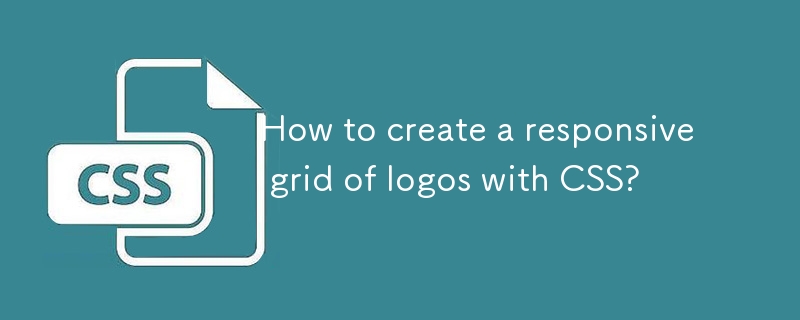
How to create a responsive grid of logos with CSS?
Article Introduction:Create a responsive logo grid with CSSGrid through the following steps: 1. Use display:grid and grid-template-columns:repeat(auto-fit,minmax(150px,1fr)) to create an adaptive column layout to ensure that it is evenly distributed and automatically wrapping lines under different screen sizes; 2. Center the logo through the flex layout in the .logo-item, and set a fixed height and background color to unify the visual effect; 3. Set max-width, max-height and object-fit:contain for the image to maintain the proportion without overflow; 4. Optionally add media queries,
2025-08-05
comment 0
313
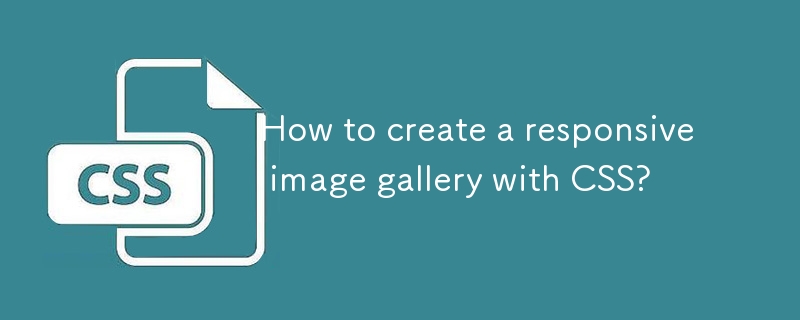
How to create a responsive image gallery with CSS?
Article Introduction:Using CSSGrid is the best way to create a responsive image library. 1. Use CSSGrid layout to implement adaptive grids through display:grid, grid-template-columns:repeat(auto-fit,minmax(200px,1fr)) and gap; 2. Optionally add media queries to accurately control the number of columns at different breakpoints, such as the small screen set to 1 column and the flat panel set to 2 columns; 3. Optimize image performance, adjust the size reasonably, use WebP format and combine srcset to achieve responsive loading; in addition, you can try multi-column layout to simulate the waterfall flow effect, but it is recommended to use the main Grid solution, which does not require JavaScript, is highly adaptable and dimensional.
2025-08-03
comment 0
715

Bootstrap Navbar: How to change style
Article Introduction:You can customize the style of BootstrapNavbar through the following steps: 1. Use CSS to modify the background color, text color, fill and hover effect; 2. Add logo and use Bootstrap's grid system to change the layout. When customizing, you need to be responsive, avoid overcomplexity, and consider performance impacts to ensure a balance between user experience and website performance.
2025-06-26
comment 0
245



















